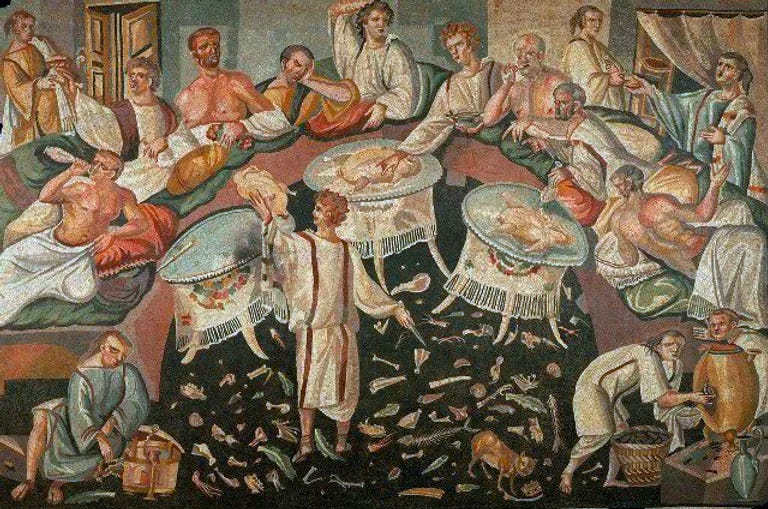Cosmic Errors, Hallucinating Reindeers, and Myth of Vomiting Romans
Cosmic Rays Glitching Phones
We have all experienced glitches on our electronics with no apparent reason. What if I tell you it may be a cosmic intervention?
Cosmic rays, those high-energy particles flying through space, can wreak havoc on your computer. These particles can collide with atoms in the Earth's atmosphere, creating secondary particles that can penetrate electronic devices like your computer, causing errors or faults. When these particles strike your computer's memory or processor, it can create a burst of energy that flips a bit, which is the basic unit of information in your computer's memory.
A flip of a bit is no joke for those who know that computers can understand only 0s and 1s at the machine level. When everything is a combination of 0s and 1s, a single change from 0 to 1 or vice-versa can change the entire meaning of a command. It can cause all sorts of problems, from system crashes to software errors and even security vulnerabilities. There have been life-threatening incidents like the 2008 Qantas Airways flight that lost hundreds of feet of elevation within minutes with no explainable cause.
But fear not! Computer manufacturers have come up with clever ways to deal with this cosmic menace. They use error-correcting codes (ECC) that can detect and correct single-bit errors in memory, or redundant components that can provide backup if a component fails. Computers used in critical applications, like those used in aerospace, nuclear power plants, or medical devices, are rigorously tested and qualified for radiation tolerance to ensure they can withstand the harsh radiation environment.
We have come a long way in the journey of electronics and chips but as devices become smaller and smaller, the ways to fend of errors have to evolve too. Watch the video here to know more about this curious phenomenon.
Reindeer Pee is Psychoactive?
Christmas season might have passed but it's never too late to learn about reindeers. From being the only mammal to be able to see ultraviolet light, to covering longer migration distances than any land mammal, Reindeer is a fascinating creature, and they are probably hallucinating?
Rumor has it that in Siberia, those who practice shamanism have taken a liking to reindeer pee! Apparently, they believe that drinking the urine of reindeer who have chowed down on fly-agaric mushrooms (Amanita muscaria) can catapult them into altered states of consciousness.
Now, before you start stocking up on reindeer urine, let me just say that this claim has been disputed by some researchers. They say that there is no evidence of such a practice and that it's just a modern urban myth. It is true that some reindeer herders in northern Europe and Asia have a tradition of consuming Amanita muscaria mushrooms, which are known to have psychoactive effects and the Reindeers eat them as well.
When humans consume Amanita muscaria mushrooms, the psychoactive compounds can be dangerous, and can lead to a range of symptoms including nausea, vomiting, and hallucinations. However, reindeers may have developed a tolerance to the toxic compounds found in the mushrooms. It is believed that some reindeer herders have collected the urine of reindeer that have consumed the mushrooms, in order to extract and consume the psychoactive compounds in a safer and more controlled manner.
Interested in knowing more about reindeers? Read here.
Wealthy Romans and "Vomitorium"
Nobody likes hearing this word but let us define "Vomitorium". The word "vomitorium" is derived from the Latin verb "vomere," which means "to spew forth" or "to discharge." In the context of an amphitheater or stadium, a "vomitorium" was a passageway that allowed a large number of people to enter or exit the seating area quickly.
In the late 19th or early 20th century, a misunderstanding arose about the term. It appears that this misconception was caused by a linguistic error: the word "vomitorium" sounds like a place where people would vomit, and there was already a prevailing stereotype about gluttonous Romans.
The prevailing myth was that the Romans had a special room for vomiting. Some ancient texts describe wealthy Romans reclining on couches while eating and then vomiting so they could continue eating more food. However, this was not a common practice among the general population, and there is no evidence to suggest that the Romans had a special room or ritual for vomiting after meals.
At that time, poets and writers who had received classical training may have encountered a few sources that portrayed ancient Romans as individuals who would vomit just to eat more. One of these sources was Seneca, a Stoic philosopher who lived from 4 B.C. to A.D. 65. In one of his passages, he described slaves cleaning up the vomit of inebriated individuals at banquets. In his Letter to Helvia, he expressed the vomitorium idea concisely but metaphorically, referring to the excesses of Rome: "They vomit so they may eat, and eat so that they may vomit."
In reality, a "vomitorium" was nothing more than a fancy term used to describe a feature found in ancient Roman amphitheaters and stadiums. This passageway allowed massive crowds of spectators to enter and exit these grandiose venues with ease. So the next time someone tries to tell you about the Romans' supposed barf room, you can give them a little history lesson.
In fact, the ancient Romans valued good digestion and often took measures to prevent indigestion, such as taking walks after meals and drinking herbal infusions. Likewise, there are several myths that you may want to uncover - 10 Common Myths About the Roman Empire





